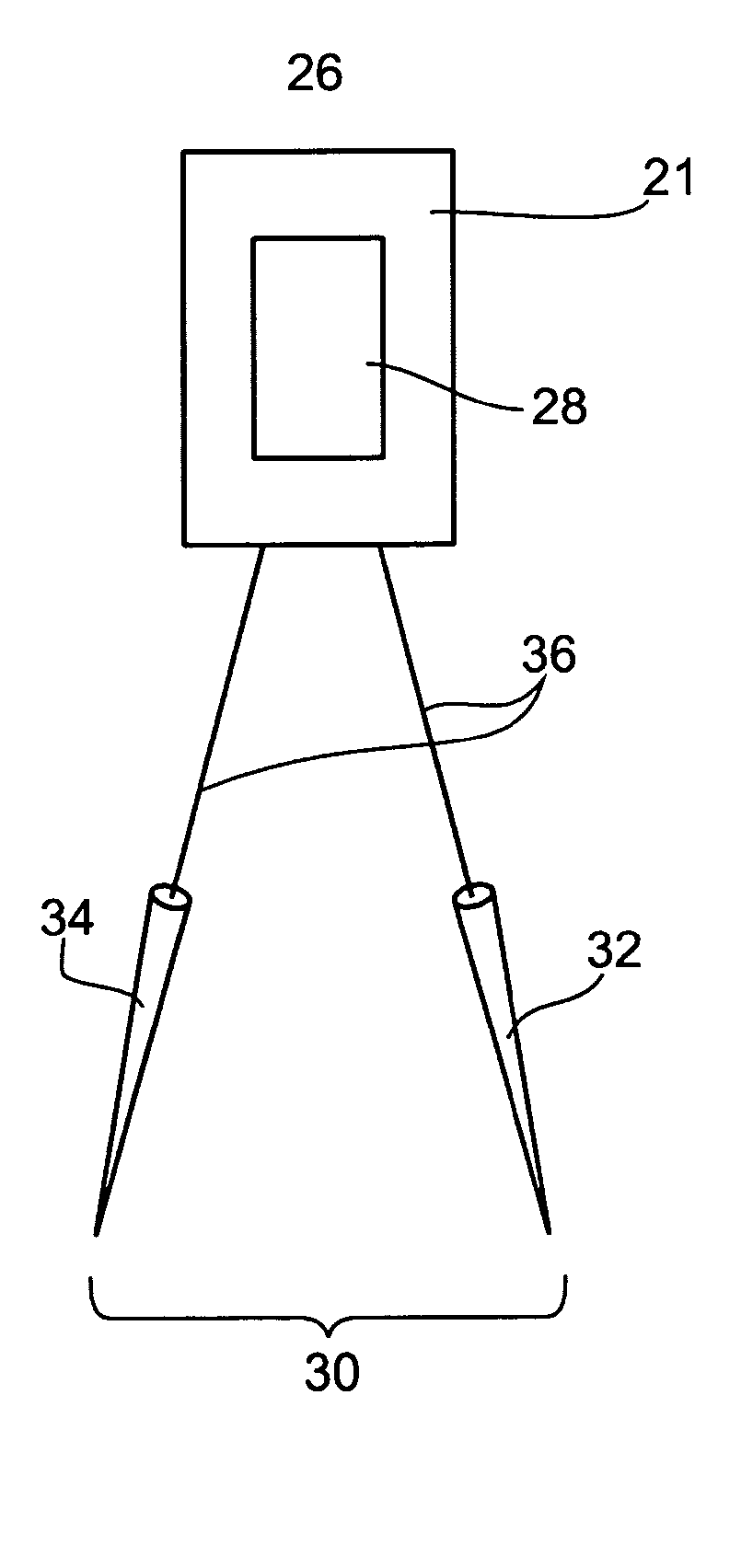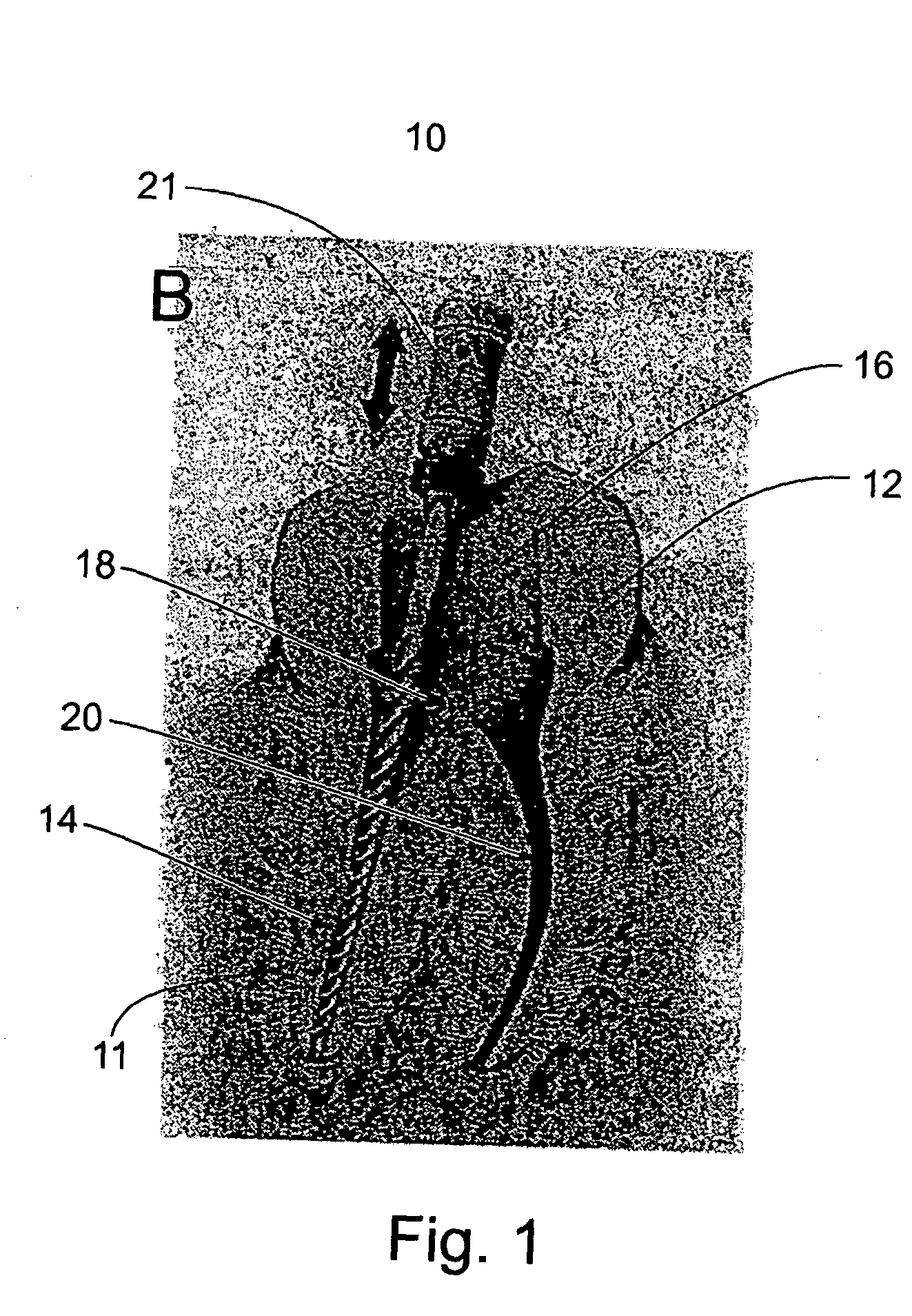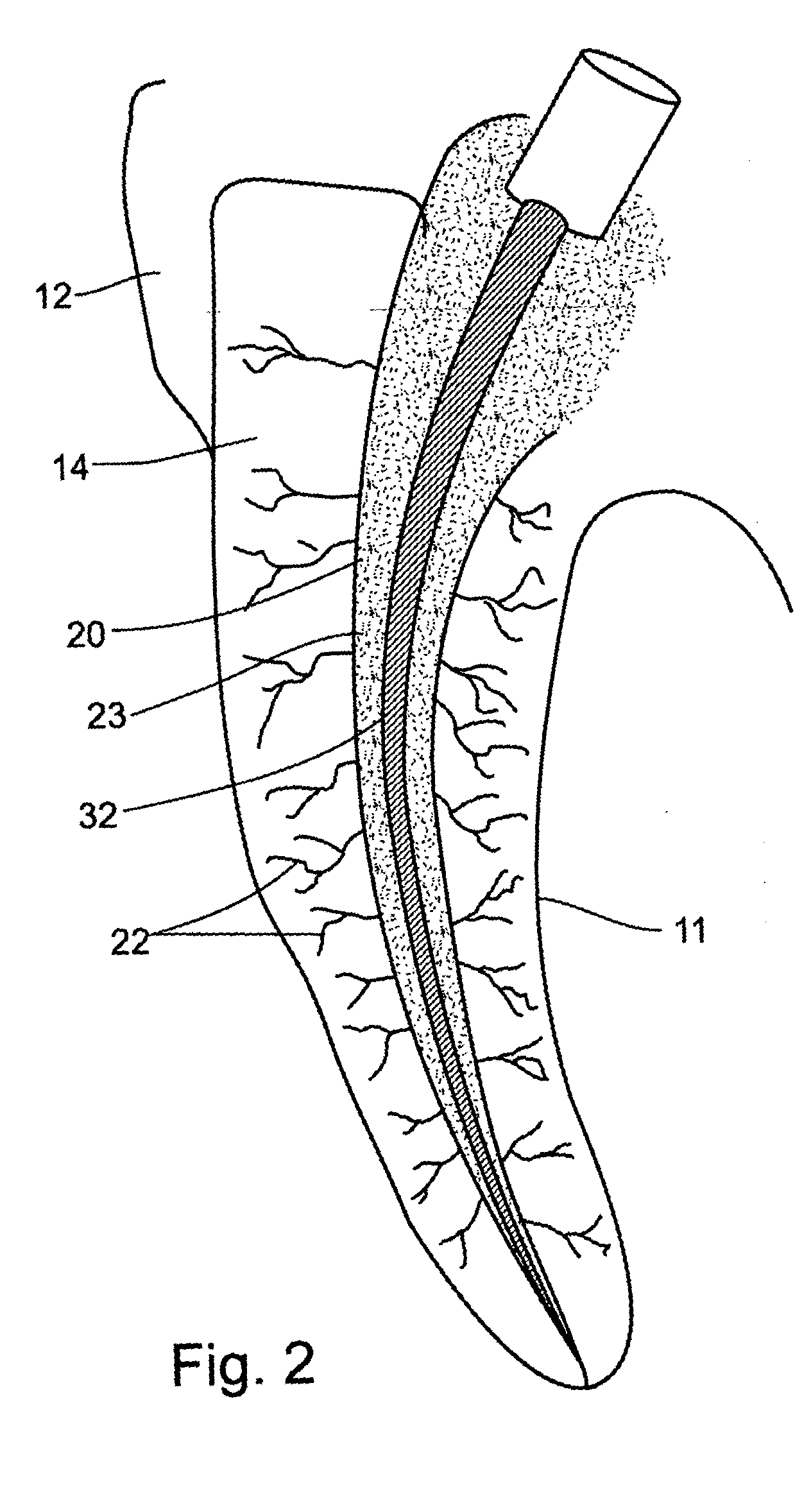Device, method and materials for mobilizing substances into dentinal tubules in root canal treatment
a technology for dentinal tubules and root canals, applied in the field of devices, methods and materials for mobilizing substances into dentinal tubules in root canal treatment, can solve the problems of exacerbated infection and bone resorption, incongruous shape or size, and inability to achieve uniform shape or size,
- Summary
- Abstract
- Description
- Claims
- Application Information
AI Technical Summary
Problems solved by technology
Method used
Image
Examples
example 1
[0104] The following example serves as a testing model for determining the efficacy of three different disinfectant procedures, all using the same antiseptic agent.
[0105] The in vitro model for dentinal tubule infection of root canals originally described by Haapasalo and Orstavik (1987) was used in the present invention with some modifications. Extracted, intact bovine incisors were kept in 0.5% NaOCl overnight for surface disinfection. Five millimeters of the apical end and two-thirds of the crown were removed with a rotary diamond saw at 1000 rpm (Isomet plus precision saw, Buehler, Ill. U.S.A.) under cooling water. The root canal of the center piece was enlarged to 2 mm in diameter with a reamer bur (Zipperer, Munich Germany). The cementum was removed using a polish paper (Ecomet 3, variable speed grinder-polisher, Buehler Ill. U.S.A.) under cooling water, resulting in a center-holed root dentin piece of approximately 6 mm outer diameter. The root was then cut into slices of 4 m...
example 2
[0111] The following example serves as a testing model to determine the efficacy of hydroxyl diffusion into a dentinal wall when subjected to a low current electrical charge. Hydroxyl ions diffusion can be determined by measuring the pH of dentin at the outer root surface. (A. Nerwich, et al 1993).
[0112] Twelve extracted human permanent teeth with single canals were divided in two groups; experimental and control. Teeth were stored in unbuffered saline solution containing 0.05% sodium azide until used. All root canals were cleaned and shaped to a size 40 master file 1 mm from the anatomical apex. Irrigation during cleaning and shaping was carried out with 2.5% NaOCl. The canals were flushed with 1 ml of 17% EDTA which was left in place for one minute to remove the smear layer followed by a final irrigation with 5 ml of sodium hypochlorite. Cavities were drilled in the outer root surfaces of all teeth at midway between the cement enamel junction and the root apex. The cavities, 1.75 ...
PUM
 Login to View More
Login to View More Abstract
Description
Claims
Application Information
 Login to View More
Login to View More - R&D
- Intellectual Property
- Life Sciences
- Materials
- Tech Scout
- Unparalleled Data Quality
- Higher Quality Content
- 60% Fewer Hallucinations
Browse by: Latest US Patents, China's latest patents, Technical Efficacy Thesaurus, Application Domain, Technology Topic, Popular Technical Reports.
© 2025 PatSnap. All rights reserved.Legal|Privacy policy|Modern Slavery Act Transparency Statement|Sitemap|About US| Contact US: help@patsnap.com



